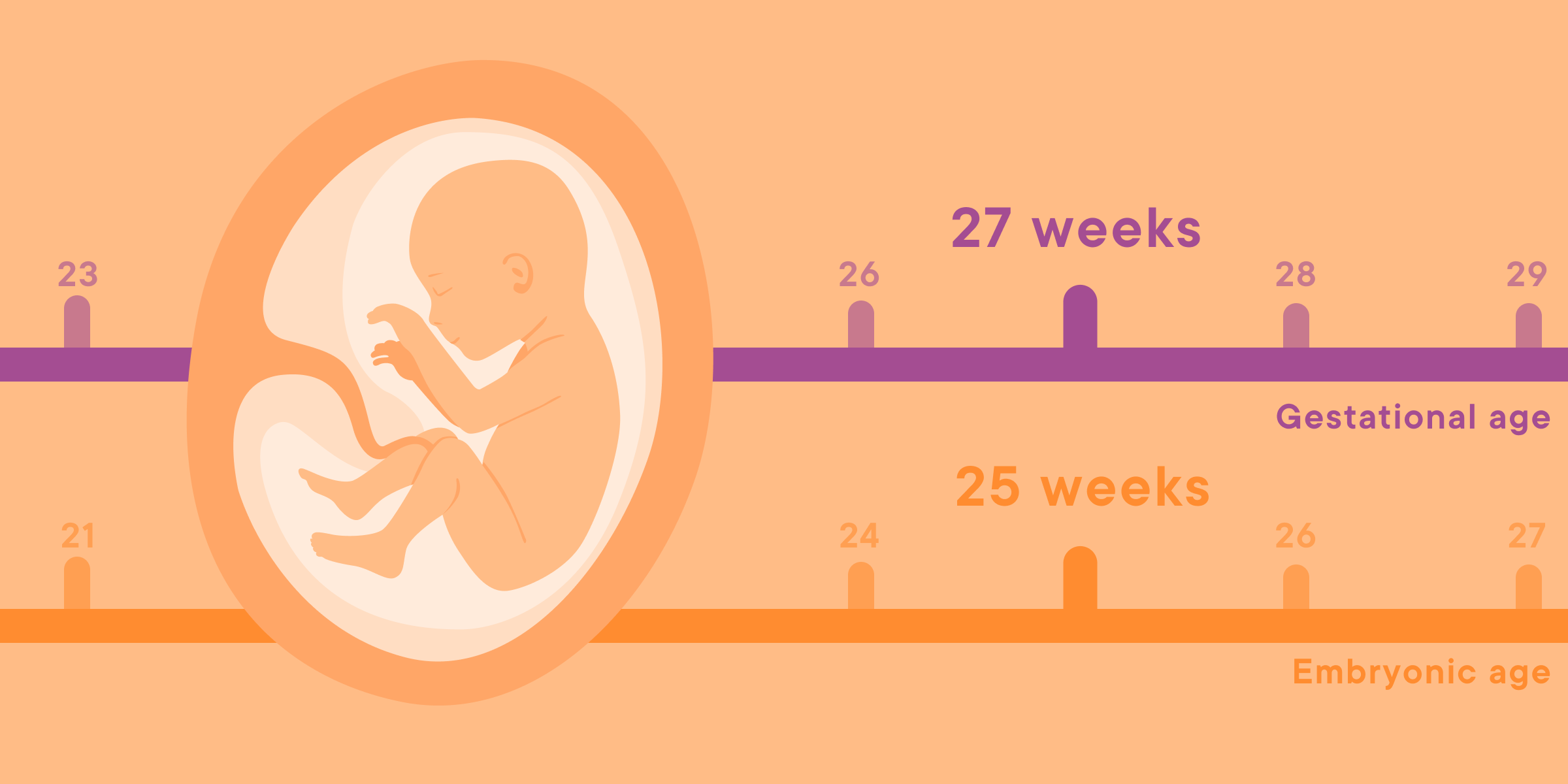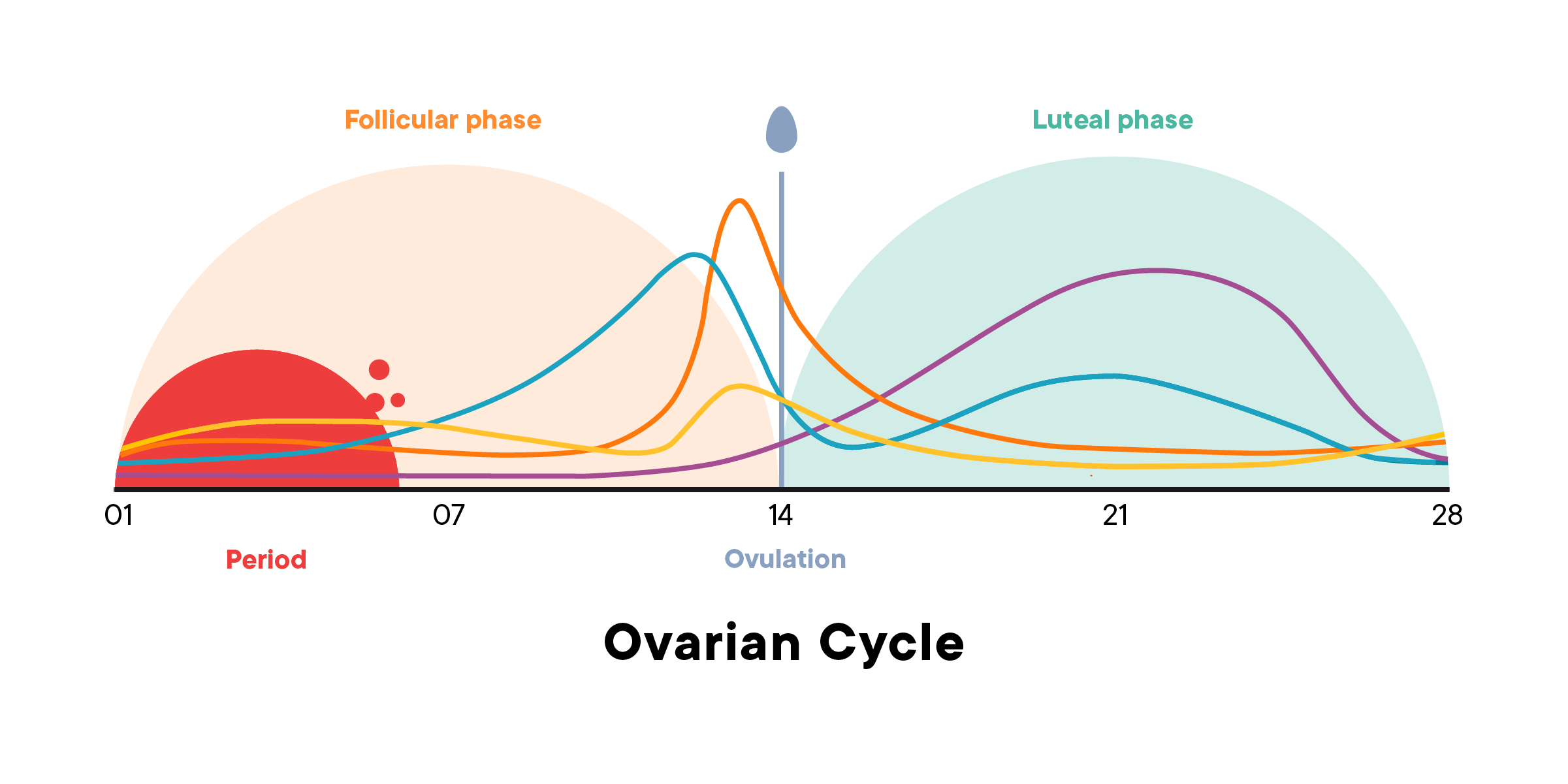Illustrations by Emma Günther
How is your due date calculated?
Not many people will birth on their due date
Top things to know:
“Due dates” are less about when a person will birth and more about keeping tabs on developments throughout the pregnancy
First trimester ultrasounds are currently considered the most accurate way to date a pregnancy
Your body gives clues about when labor might happen
One of the first things you probably want to know when you see a positive pregnancy test is when you will experience birth. Your “due date,” also called your estimated date of delivery (EDD), is based on your menstrual cycle.
How do you date a pregnancy?
Most people don’t know the exact date of conception, so the due date is calculated as 280 days since the first day of your last period (1). If you do know your date of conception, the due date can be calculated as 266 days from that date (1).
Now, here’s where it gets a little complicated. There are two ways to know how far along your pregnancy is. One is called gestational age and it’s the standard form of EDD used by most pregnancy providers in the USA. It’s based on the first day of your last period, as described above.
The other type is called embryonic age and this is the standard used by embryology researchers, scientists who do research assisted reproduction. Embryonic age is based on the day of conception, which is typically 14 days fewer than gestational age but varies depending on a person’s menstrual cycle (2). Embryonic age is normally not used in pregnancy care, but If you see this term, you can know that it is two weeks less than your fetus’s gestational age.

Why do estimated due dates (also called pregnancy dating) matter? As your pregnancy develops, your healthcare provider will monitor you and your fetus based on this date. Accurate dating helps your healthcare team monitor the health of you and your fetus. Let’s explore more about due dates and how and when they are most accurate.
What is the last menstrual period (LMP)?
Your LMP can be an important milestone for your pregnancy. A menstrual cycle starts with the first day of the period, a date that healthcare providers refer to as the “last menstrual period” (3). Throughout pregnancy, you might see this date on your paperwork listed as “LMP.”

The first phase of the menstrual cycle is called the follicular phase (3). It starts with the first day of your period, your LMP. The period is the time when the ovaries are the most inactive as your body prepares for all the hormonal changes of the upcoming cycle (2).
A due date based on the last menstrual period doesn’t work for everyone
Because every body is different, and each cycle is unique, an estimated due date based on the last menstrual period won’t be accurate most of the time, unless you have a scheduled labor induction or cesarean section. When an estimated due date is based on your last period, it assumes that you have 28-day cycles and that you ovulated on day 14 (1). Many factors make this method less than perfect, like cycle length and ovulation date variations (3-7):
A person may not know their last period start date (tracking your first full flow day with the Clue app makes sure that you do)
Early pregnancy bleeding can look like a period
Recent hormonal contraceptive use can impact both bleeding and ovulation
The length of the follicular phase of the cycle can vary. This can cause ovulation to occur earlier or later than day 14 of the cycle
Time from conception to fertilization varies
Time between fertilization and implantation varies
Women and people who are breastfeeding/chest feeding can ovulate before their period has returned
Ultrasound can more accurately predict the estimated due date
About 4-5% of women and pregnant people birth on their estimated due date (1, 8, 9). This is because of two reasons: estimating gestational age is a varied and complicated process and pregnancies naturally vary from person to person and pregnancy-to-pregnancy (1).
Ultrasounds, also called sonograms or sonos, can be more accurate than LMP at predicting the date of birth if performed early in pregnancy (9). Research suggests that the most accurate time for an ultrasound is between 11-14 weeks gestational age (9). Ultrasounds performed early in pregnancy may be called “dating scans” by your healthcare provider because they look at the size of several different parts of the fetus to determine its approximate gestational age.
When pregnant people have dating scans in and between weeks 11-14, about 70% will birth close to their estimated due date (1). Ultrasounds are still considered accurate at predicting birth date if performed before 22 weeks of gestational age (10, 11). Third-trimester ultrasounds are not recommended for pregnancy dating, but in some cases, they may be the only measurement available. Third-trimester ultrasounds are generally used for pregnancy dating only if a pregnant person does not have an ultrasound until the third trimester and the date predicted by the ultrasound is three weeks or more off from the due date estimated by LMP (1,10).
Your uterus gives clues about your due date
Pregnancy providers often break out a measuring tape during prenatal visits and mark down the measurement of the uterus. In the absence of any dating technology, measuring the uterus, called fundal height, can give healthcare providers and women and pregnant people a general idea of gestational age (12). During pregnancy, the uterus stays unseen within your pelvis until about 12 weeks (2). Depending on your body type, you may begin to see a “baby bump” as your uterus protrudes out of the pelvis in the following weeks.
By week 16, the top of the uterus will be about halfway between the pubic bone and natural location of the belly button (2). At 20 weeks, it’s likely that the uterus will be right at the belly button (2). From this point on, the uterus will enlarge about one centimeter per week so that at 25 weeks it measures 25 centimeters, 30 centimeters at 30 weeks, and so on (2). Fundal height isn’t believed to be as accurate as other measurements, but is still measured during prenatal visits to make sure the fetus is growing as expected.

An estimated due date is often a “guess date”
There are a few ways to determine gestational age and estimated due date, but none are perfect. Pregnant people often birth weeks before or after their due date. Researchers are working to understand more about what causes labor to start. One prevalent theory is that the fetus sends signals that it is ready to breathe by releasing compounds from the lungs (13). While there are still so many mysteries about what causes labor to start, current dating technology is not yet accurate enough to predict the day a person will labor and birth.
It might not be helpful for planning purposes, but EDD helps healthcare providers monitor the growth of the fetus, as well as some health conditions in both the fetus and pregnant parent.
Subscribe to Clue Plus to track your pregnancy so you can learn about how your fetus is developing, milestones, and tips for birth.

